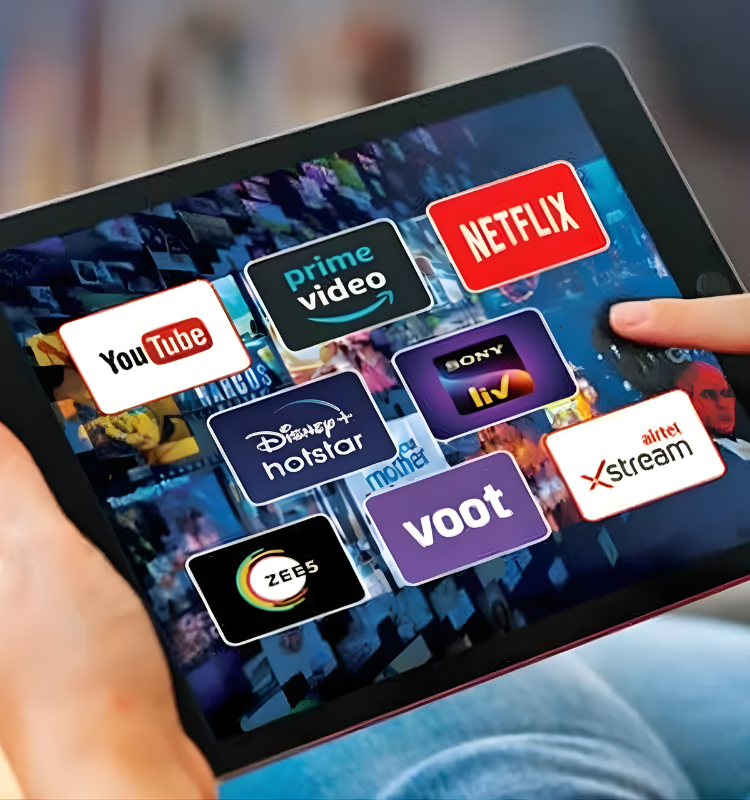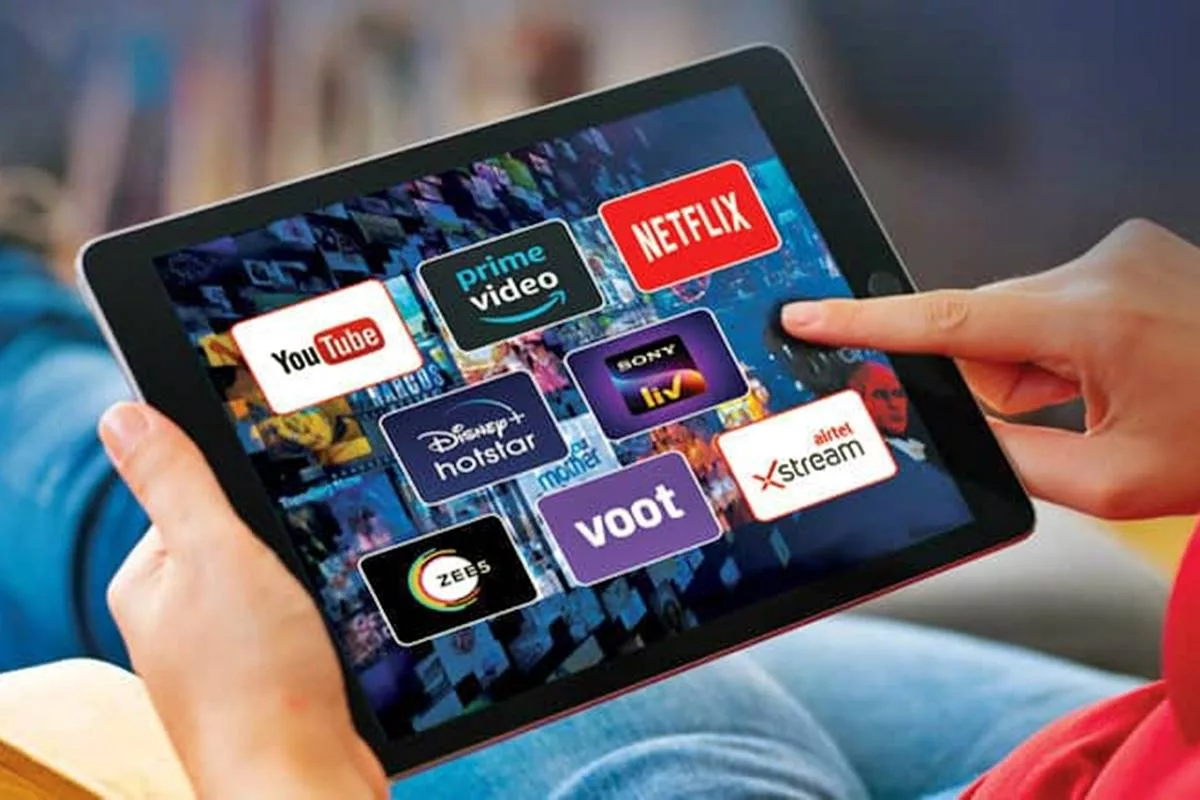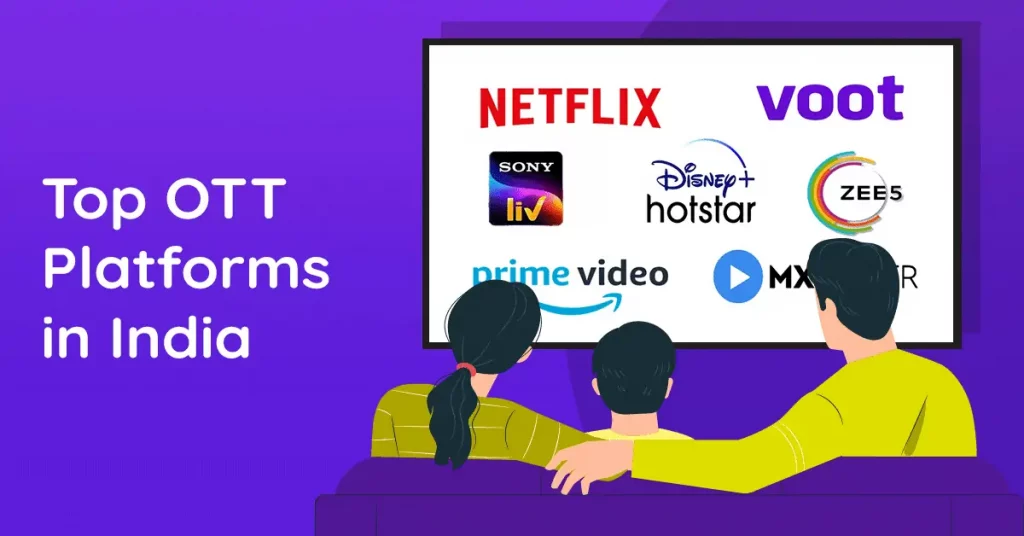Now Reading: OTT Subscription Waste in India 2025: The ₹15,000 Annual Streaming Trap
-
01
OTT Subscription Waste in India 2025: The ₹15,000 Annual Streaming Trap
OTT Subscription Waste in India 2025: The ₹15,000 Annual Streaming Trap

A middle-class family in Delhi just calculated their annual OTT subscription costs and discovered they’re spending ₹15,840 yearly on streaming services they barely use, and their experience reveals a frustrating reality affecting millions of Indian households – the convenience of “just ₹199/month” subscriptions adds up to significant annual expenses when families maintain 4-5 active subscriptions simultaneously, paying for overlapping content and services nobody actually watches.

Here’s the brutal truth that streaming and OTT platforms don’t emphasize during promotional campaigns: the average Indian household with Netflix, Amazon Prime, Disney+ Hotstar, Sony LIV, and one regional platform spends ₹12,000-₹18,000 annually on subscriptions, yet watches content primarily on just 1-2 platforms while keeping others active “just in case,” essentially donating thousands of rupees yearly to entertainment conglomerates for content that sits unwatched.
The most shocking part? The Delhi family’s ₹15,840 annual OTT cost could be reduced to ₹4,000-₹6,000 through strategic subscription rotation, family plan sharing, and annual subscription timing – saving ₹10,000+ yearly without sacrificing access to desired content. That’s enough savings to fund a weekend vacation or several months of groceries.

The Real Cost of Multiple OTT Subscriptions in 2025
Understanding actual subscription costs requires looking beyond advertised monthly prices to calculate true annual expenses, including premium tiers, multiple profiles, and accumulated subscriptions that seemed affordable individually but devastate budgets collectively.
Major OTT Platform Pricing (India 2025)
Netflix:
- Mobile plan: ₹149/month (₹1,788/year)
- Basic plan: ₹199/month (₹2,388/year)
- Standard plan: ₹499/month (₹5,988/year)
- Premium plan: ₹649/month (₹7,788/year)
Amazon Prime Video:
- Monthly: ₹299/month (₹3,588/year)
- Annual: ₹1,499/year (saves ₹2,089)
- Includes Prime delivery benefits
Disney+ Hotstar:
- Mobile plan: ₹149/month (₹1,788/year)
- Super plan: ₹299/month (₹3,588/year) or ₹899/year (saves ₹2,689)
- Premium plan: ₹499/month (₹5,988/year) or ₹1,499/year (saves ₹4,489)
Sony LIV:
- Mobile plan: ₹129/month (₹1,548/year)
- Premium plan: ₹299/month (₹3,588/year) or ₹699/year (saves ₹2,889)
- Premium duo: ₹499/month or ₹999/year
ZEE5:
- Mobile plan: ₹99/month (₹1,188/year)
- Premium plan: ₹299/month (₹3,588/year) or ₹699/year (saves ₹2,889)
The annual vs monthly pricing difference is staggering – families paying monthly for services used year-round waste ₹10,000-₹15,000 annually compared to purchasing annual subscriptions upfront when platforms offer 50-75% discounts.
Typical Family OTT Subscription Pattern
Middle-class family with moderate entertainment consumption:
- Netflix Standard (for HD quality): ₹5,988/year
- Amazon Prime (for shopping + streaming): ₹1,499/year
- Disney+ Hotstar Premium (for sports): ₹1,499/year
- Sony LIV Premium (for Indian shows): ₹699/year
- Regional platform (Malayalam/Tamil): ₹899/year
- Total: ₹10,584/year minimum
Upper-middle-class family with heavy streaming:
- Netflix Premium (4K, 4 screens): ₹7,788/year
- Amazon Prime: ₹1,499/year
- Disney+ Hotstar Premium: ₹1,499/year
- Sony LIV Premium: ₹699/year
- ZEE5 Premium: ₹699/year
- Apple TV+: ₹1,188/year
- Total: ₹13,372/year minimum
These calculations assume annual subscriptions purchased during discount periods. Families paying monthly rates can easily exceed ₹18,000-₹22,000 annually.
The Subscription Waste Patterns That Drain Budgets

Most families maintain subscriptions through force of habit rather than conscious decision-making, creating predictable waste patterns that unnecessarily inflate entertainment expenses.
Pattern #1: The “Just in Case” Subscriptions
Keeping subscriptions active “just in case” something interesting releases, despite months of inactivity. Analysis of Delhi family’s viewing history revealed they hadn’t opened Sony LIV app in four months yet maintained ₹299/month subscription (₹1,196 wasted on unused service).
Real viewing behavior: Most families watch content on 1-2 primary platforms 90% of the time, occasionally accessing others for specific shows before reverting to preferred services. Maintaining continuous subscriptions to rarely-used platforms wastes thousands annually.
Pattern #2: Premium Tiers Nobody Uses
Paying for Premium/Ultra HD tiers when viewing primarily on mobile devices or 1080p TVs that can’t display the quality difference. The Delhi family paid for Netflix Standard (₹499/month) for HD quality despite watching 80% of content on phones where Mobile plan (₹149/month) provides identical experience.
The tier upgrade waste: ₹350/month × 12 = ₹4,200 annual waste on quality improvements nobody actually experiences.
Pattern #3: Individual Plans Instead of Family Sharing
Not utilizing family plan features or sharing subscriptions with extended family/friends, instead maintaining individual accounts that cost 3-4x more than shared plans would.
Example: Four friends each paying ₹299/month for Amazon Prime (₹14,352 total annually) versus splitting one ₹1,499 annual subscription (₹375 per person, saving ₹11,856 collectively).
Pattern #4: Monthly vs Annual Payment Waste
Paying monthly rates for services used year-round, missing 50-75% discounts available through annual subscriptions. Disney+ Hotstar Premium costs ₹5,988 annually via monthly payments versus ₹1,499 for annual subscription – a ₹4,489 waste from payment frequency alone.
The psychological trap: Monthly fees seem more affordable (₹499 feels manageable) versus upfront annual costs (₹1,499 feels expensive) despite annual being dramatically cheaper overall.
Pattern #5: Overlapping Content Libraries
Maintaining multiple subscriptions with overlapping content libraries, paying twice for access to the same shows/movies available on different platforms. Many Bollywood movies appear on both Prime Video and Netflix within months, yet families maintain both subscriptions full-time despite watching movies once on first available platform.
The Strategic Subscription Rotation Strategy
The most effective cost-reduction strategy involves rotating subscriptions rather than maintaining all simultaneously, subscribing only when specific desired content releases then cancelling until new interesting content arrives.
Quarterly Rotation Example
January-March: Subscribe to Netflix + Disney+ Hotstar (cricket season)
- Cost: ₹499+₹1,499 (annual Hotstar) = ₹1,996 for quarter
- Cancel Netflix end of March
April-June: Subscribe to Amazon Prime + Sony LIV (annual deals)
- Cost: ₹1,499+₹699 (annual) = ₹2,198 for entire year
- Keep these active as already paid annually
July-September: Resubscribe Netflix for new season releases
- Cost: ₹499/month × 3 = ₹1,497
- Cancel end September
October-December: Disney+ Hotstar active (Diwali releases, cricket)
- No additional cost (paid annually in January)
Total annual cost: ₹5,691 versus ₹10,584 maintaining all subscriptions year-round Annual savings: ₹4,893 (46% cost reduction)
The rotation strategy requires discipline to actually cancel subscriptions rather than keeping them “one more month,” but the savings justify the minor inconvenience of occasionally lacking immediate access to specific platforms.
Content Release Tracking
Successful rotation requires knowing when desired content releases to time subscriptions appropriately. Apps like JustWatch track new releases across platforms, helping plan subscription timing around content availability rather than maintaining year-round access hoping something interesting appears.
Major content release patterns:
- Big Bollywood movies: Release 45-60 days after theatrical run
- Popular web series: Season releases quarterly or annually
- Live sports: IPL (March-May), World Cup (varies), ongoing cricket
Timing subscriptions around these patterns maximizes content access while minimizing subscription overlap.
The Family Plan Sharing Economics
Family plans designed for household use can be extended to trusted friends/family members, dramatically reducing per-person costs while remaining within terms of service.
Netflix Family Plan Sharing
Premium plan (₹649/month or ₹7,788/year):
- Supports 4 simultaneous screens
- 4K quality
- Split among 4 people: ₹1,947 per person annually
Versus individual Basic plans:
- 4 people × ₹2,388/year = ₹9,552 total
- Savings from sharing: ₹7,788 – ₹1,947 = ₹1,947 per person (₹7,788 collectively)
The sharing economics become more compelling with annual subscriptions purchased during sales. Premium annual subscription at ₹6,000 (typical sale price) split 4 ways costs just ₹1,500 per person yearly.
Amazon Prime Household Sharing
Amazon allows 2 adults to share Prime benefits including video streaming. Couples or close friends splitting ₹1,499 annual subscription pay ₹750 each versus ₹1,499 individually, saving ₹749 per person (₹1,498 collectively).
The Prime sharing provides additional benefits beyond video – shared shopping benefits, music streaming, and free delivery advantages create value beyond entertainment alone.
Disney+ Hotstar Group Viewing
Premium plan supports 4 concurrent streams but accounts can’t be explicitly “shared” in official documentation. However, family members using same subscription from different locations functions practically, with ₹1,499 annual cost split among family members reducing per-person expense to ₹375-500 depending on group size.
Important Sharing Considerations
Terms of service: Platforms officially allow sharing within households; extending beyond violates terms but enforcement remains minimal in practice Trust factors: Share only with people you trust not to change passwords or max out simultaneous stream limits Payment coordination: Designate one person for payment with others reimbursing their shares Password security: Use strong passwords and enable two-factor authentication
The Annual Subscription Sale Timing Strategy
OTT platforms offer significant discounts during specific annual sale periods, making subscription timing as important as service selection for cost optimization.
Major Annual Sale Periods in India
Diwali Sales (October-November):
- Discounts: 30-60% off annual plans
- Best for: Disney+ Hotstar, ZEE5, Sony LIV
- Strategy: Purchase full year subscriptions for 50% off normal rates
Amazon Prime Day (July):
- Discounts: Prime membership 30-40% off
- Best for: Prime Video + shopping benefits combined
- Strategy: Purchase annual membership during sale for maximum savings
Independence Day Sales (August):
- Discounts: Various platforms offer 25-40% off
- Best for: Netflix, regional platforms
- Strategy: Buy annual subscriptions for services you’ll use year-round
New Year Sales (January):
- Discounts: Fresh discount periods to start calendar year
- Best for: New subscriptions or renewals
- Strategy: Coordinate renewals with sale timing
The timing strategy requires planning subscription start/end dates around these sale periods, using monthly subscriptions strategically to bridge gaps until major sales when annual subscriptions become affordable.
Sale Stacking Strategy
Combine platform sales with credit card offers (additional 10-15% cashback), bank offers (instant discounts), and coupon codes (₹100-300 off) to maximize total savings beyond advertised sale prices.
Example: Disney+ Hotstar Premium
- Regular price: ₹1,499/year
- Diwali sale: ₹999/year (33% off)
- Credit card cashback: ₹150 (15%)
- Net cost: ₹849/year (43% total savings)
The Mobile-Only Plan Value Proposition
Most families overlook mobile-only plans despite watching 60-70% of content on phones, paying premium prices for TV/desktop access rarely used.
Mobile Plan Economics
Netflix Mobile (₹149/month vs ₹499 Standard):
- Limitations: 480p quality, single screen, mobile/tablet only
- Savings: ₹350/month (₹4,200 annually)
- Practical trade-off: Acceptable quality on phone screens, significant savings
Disney+ Hotstar Mobile (₹149/month vs ₹299 Super):
- Limitations: 720p quality, single device, mobile/tablet only
- Savings: ₹150/month (₹1,800 annually)
- Practical trade-off: Adequate quality for mobile viewing, half the cost
Sony LIV Mobile (₹129/month vs ₹299 Premium):
- Limitations: Single screen, mobile only
- Savings: ₹170/month (₹2,040 annually)
- Practical trade-off: Substantial savings for mobile-primary viewers
The mobile plan strategy works best for individual viewers or families where members watch content separately on phones rather than gathering for TV viewing.
Hybrid Strategy
Maintain one Premium subscription for family TV viewing (shared among household) while using Mobile plans for individual content consumption on personal devices, minimizing total subscription costs while covering both use cases.
Example hybrid setup:
- Netflix Premium (₹649/month) for family TV viewing, split among 4 people
- Disney+ Hotstar Mobile (₹149/month) for individual sports watching
- Total per person: ₹312/month versus ₹948 if everyone had individual Premium accounts
The Free and Ad-Supported Alternative
Before committing to paid subscriptions, exploring free platforms and ad-supported tiers can provide substantial entertainment value without any subscription costs.
Major Free Platforms (India 2025)
YouTube: Unlimited free content including original shows, movies (limited selection), music videos, user-generated content MX Player: Free Bollywood movies, web series, live TV with ads Voot: Free tier with limited content library, ad-supported Jio Cinema: Free with Jio connection Sony LIV Free: Limited content compared to Premium but substantial library
The free alternative strategy: Use free platforms for 70-80% of content consumption, maintaining just 1-2 paid premium subscriptions for exclusive content not available elsewhere.
Ad-Supported Tier Consideration
Some platforms offer cheaper ad-supported tiers versus ad-free premium:
- Netflix Basic with Ads (if launched in India): Projected ₹99/month versus ₹199 for ad-free Basic
- Savings: ₹1,200 annually for tolerating occasional advertisements
The tolerance question: Can you handle 4-6 minutes of ads per hour in exchange for 40-50% cost savings? For price-sensitive viewers, this trade-off makes economic sense.
The Regional Platform Rationalization
Many Indian households maintain both pan-India platforms and regional language platforms, creating unnecessary overlap when single services might suffice.
Regional Platform Assessment
Malayalam content:
- Available on: Amazon Prime, Netflix (limited), Sony LIV, dedicated Malayalam platforms
- Strategy: If 80%+ of Malayalam watching is new releases, dedicated platform justified; if watching mix of old/new, Prime Video sufficient
Tamil content:
- Available on: Amazon Prime, Netflix, Sony LIV, Sun NXT, aha
- Strategy: Evaluate whether pan-India platforms provide adequate Tamil content before adding dedicated regional subscription
Telugu content:
- Available on: Amazon Prime, Netflix, aha, ZEE5
- Strategy: aha subscription (₹699/year) justified for Telugu-primary households; others can use Prime’s substantial Telugu library
The regional rationalization question: Does the dedicated regional OTT platform provide enough unique content to justify ₹699-999 annual cost, or does existing pan-India subscription already cover 80% of desired regional content?
The Sports Subscription Dilemma
Live sports create unique challenges because fans feel compelled to maintain subscriptions during entire sporting seasons despite watching only specific matches/tournaments.
Sports Subscription Economics
Disney+ Hotstar Sports:
- Coverage: IPL, cricket tours, football leagues
- Annual cost: ₹1,499 (Premium) or ₹899 (Super)
- Actual usage: Heavy during IPL (2 months), moderate during cricket season (4-5 months), minimal otherwise
Fan Network:
- Coverage: Domestic football, international leagues
- Cost: ₹299/month or ₹2,599/year
- Actual usage: Concentrated during league seasons
The sports subscription optimization: Purchase only during active seasons, cancelling between major tournaments rather than maintaining year-round subscriptions for occasional match viewing.
IPL example: Subscribe March-May for ₹299 × 3 months = ₹897, cancel June-February versus ₹3,588 annual subscription, saving ₹2,691 for identical tournament coverage.
The Forgotten Subscription Audit
The most critical cost-saving measure involves regularly auditing active subscriptions, canceling unused services before automatic renewals waste money on platforms nobody watches.
Quarterly Subscription Audit Checklist
List all active subscriptions with renewal dates Review last 3 months viewing history per platform Calculate cost-per-hour for each service (subscription cost ÷ hours watched) Identify subscriptions with <10 hours viewing quarterly (candidates for cancellation) Check for duplicate content across platforms Verify family plan utilization (are all screens being used?) Compare viewing patterns to subscription costs
Real audit example from Delhi family:
- Sony LIV: ₹299/month, 2 hours viewed in 3 months = ₹448 per hour watched
- Netflix: ₹499/month, 45 hours viewed in 3 months = ₹33 per hour watched
- Action: Cancel Sony LIV (resubscribe if specific show releases), maintain Netflix
The audit discipline: Set calendar reminders quarterly to perform this review, canceling low-value OTT subscriptions before automatic renewals charge cards for services nobody uses.
The Future of Subscription Bundling
Telecommunications companies increasingly bundle OTT subscriptions with mobile/broadband plans, providing cost-effective access to multiple platforms through single telecom relationship.
Current Telecom OTT Bundles (2025)
Jio Fiber Plans:
- Premium plans include: Netflix, Prime Video, Disney+ Hotstar bundled
- Cost: Effective ₹500-800/month for fiber + multiple OTT services
- Value: Better than purchasing subscriptions individually
Airtel Black Plans:
- Includes: Prime Video, Disney+ Hotstar, Wynk Music
- Cost: Bundled with broadband/DTH at competitive pricing
- Value: Eliminates separate subscription management
Vi (Vodafone Idea) Plans:
- Includes OTT like: Prime Video, Sony LIV, Disney+ Hotstar (select plans)
- Cost: Bundled with mobile plans
- Value: Reduces separate entertainment expense
The bundling strategy: Evaluate whether upgrading telecom plan to include OTT bundles costs less than maintaining separate internet + individual subscriptions, often providing 30-40% savings when calculated holistically.
The Delhi family’s ₹15,840 annual streaming expense represents the normalized but entirely preventable entertainment cost inflation that’s crept into Indian household budgets as OTT platforms have proliferated. The convenience of “just ₹199/month” multiplied across 4-5 services creates ₹12,000-18,000 annual expenses that strategic subscription management can reduce by 50-70% without sacrificing access to desired content.
The path from wasteful spending to optimized entertainment budgets involves quarterly subscription audits, strategic rotation rather than simultaneous subscriptions, annual purchase timing around major sales, family plan sharing among trusted contacts, and honest assessment of whether Premium tiers and multiple platforms provide value proportional to their costs.
Your neighbor who casually mentions having “all the streaming services” is likely spending ₹15,000-20,000 annually on entertainment subscriptions without realizing that strategic planning could provide identical content access for ₹5,000-7,000, saving ₹10,000+ yearly that could fund vacations, investments, or hundreds of other budget priorities beyond paying for content that sits unwatched.
The OTT streaming revolution has made entertainment more accessible than ever, but the subscription accumulation trap has created a new form of entertainment debt where families pay thousands annually for services they don’t actively use. Breaking free from this trap requires only awareness and the discipline to cancel unused subscriptions rather than keeping them “just in case” – a small behavior change that yields thousands in annual savings.
Frequently Asked Questions about OTT:
How much do typical OTT subscriptions cost in India annually? A middle-class Indian family with OTTs such as Netflix Standard (₹5,988/year), Amazon Prime (₹1,499/year), Disney+ Hotstar Premium (₹1,499/year), Sony LIV Premium (₹699/year), and one regional platform (₹899/year) spends ₹10,584 minimum annually on OTT. Upper-middle-class families with Netflix Premium and additional platforms easily spend ₹13,000-18,000 yearly. Families paying monthly rates instead of annual subscriptions can exceed ₹20,000 annually due to missing 50-75% discounts on annual plans.
What is the OTT subscription rotation strategy and how much can it save? OTT Subscription rotation involves maintaining only 1-2 active subscriptions at any time, subscribing to others only when specific desired content releases, then cancelling until new interesting content arrives. Instead of maintaining Netflix, Prime, Hotstar, Sony LIV, and ZEE5 simultaneously (₹10,000+/year), rotate between them quarterly based on content releases (₹4,000-6,000/year), saving ₹4,000-6,000 annually without sacrificing access to desired content.
How does family plan sharing reduce OTT subscription costs? Family plan sharing splits subscription costs among multiple users: Netflix Premium (₹7,788/year) supports 4 screens, costing just ₹1,947 per person when shared versus ₹2,388+ for individual plans. Amazon Prime (₹1,499/year) allows 2 adults to share, costing ₹750 each. Disney+ Hotstar Premium (₹1,499/year) supports 4 concurrent streams, costing ₹375-500 per person when family members split costs. Total savings from sharing: ₹5,000-10,000 annually for groups of 3-4 people.
When are the best times to buy OTT subscriptions in India? Major sale periods offer 30-60% discounts on annual OTT subscriptions: Diwali sales (October-November) provide best discounts on Disney+ Hotstar, ZEE5, Sony LIV; Amazon Prime Day (July) offers 30-40% off Prime memberships; Independence Day sales (August) discount various platforms 25-40%; New Year sales (January) provide fresh discount periods. Timing annual OTT subscription purchases during these sales saves ₹2,000-5,000 compared to regular pricing.
Are mobile-only OTT plans worth it? Mobile-only plans provide excellent value for viewers who watch primarily on phones/tablets: Netflix Mobile (₹1,788/year) saves ₹4,200 annually versus Standard OTT plan while providing acceptable 480p quality on phone screens. Disney+ Hotstar Mobile (₹1,788/year) saves ₹1,800 versus Super plan with adequate 720p mobile quality. Sony LIV Mobile (₹1,548/year) saves ₹2,040 versus Premium. For individuals or families watching separately on phones rather than sharing TV viewing, mobile plans for OTT reduce costs 40-60% while maintaining satisfactory viewing experience on small screens.
Also read: Critical Mistake: Why Charging To 100% Every Night Is Destroying Your Phone Battery – ParsoTak.in


















